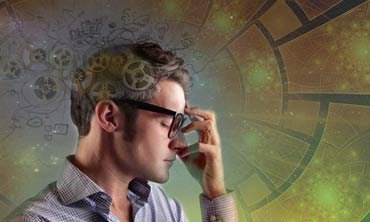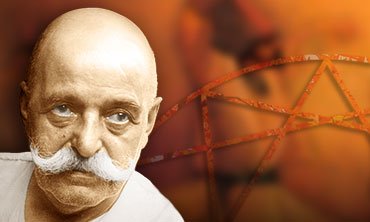AZTLAN CULTURAL CENTER
of Psychology, Philosophy, and Humanities.
Dir.: León Azulay
Civil Association I.G.J. No. 748

Who Was Gurdjieff?
George Ivanovitch Gurdjieff led an extraordinarily rich life. He was born in Armenia on January 13, 1866. His mother was Armenian, and his father, Ioannas Giorgiades, was of Greek origin. Gurdjieff made an extraordinary contribution to humanity by translating very ancient knowledge from the East into a language for Western men and women of the 20th and 21st centuries.
Countless studies and memoirs have been written about Gurdjieff; he is mentioned in the Encyclopedia Britannica. In 1979, his autobiographical book "Meetings with Remarkable Men" was adapted into a film about Gurdjieff's life, directed by Peter Brook. Seminars on his ideas are held at the University of Oxford and other major universities worldwide. Nevertheless, his influence for posterity is still in motion. His works include four published books, a ballet, 300 piano pieces, around 100 sacred dances or Movements, and symbols such as the Enneagram, which have served as the basis for new educational and therapeutic systems, including that of Claudio Naranjo today (who, as he recounts, drew from Gurdjieff's teachings).
Gurdjieff was the decisive and invigorating factor in countless lives, as attested by his disciples who continued his work and the Fourth Way movement for the harmonious development of man. Among Gurdjieff's most prominent disciples are P. Ouspensky, Maurice Nicoll, Rodney Collin, Thomas Hartmann and Olga de Hartmann, J.G. Bennett, Jeanne de Salzmann, among others. Gurdjieff taught in Europe and the United States, although the scope of his influence extends to all continents. In Latin America, his legacy has been continued through his direct or indirect disciples, such as Rodney Collin (who served as Ouspensky's secretary and traveled to Argentina until his death in Cuzco, Peru). Through the Fourth Way system, it can be said that he expanded psychology as the study of the soul with the broadest concept of human potential development. The continuity of the human adventure seems to depend more and more on this AWAKENING that Gurdjieff advocated.
In 1949, he made his final visit to the United States to oversee the publication of his books. That same year, his health deteriorated, and after choreographing his last "movement" (No. 39), he collapsed and was taken to the American Hospital in Neuilly. Surrounded by disciples, he passed away on the morning of October 29 and was buried in Fontainebleau, Avon, next to his mother and wife. After his death, a blackout occurred, leaving the cathedral where he was laid out and its surroundings without light. Nature's signs when a teacher departs. After the solemn burial, Jeanne de Salzmann told her disciples, "When a teacher like Mr. Gurdjieff disappears, he cannot be replaced."
















